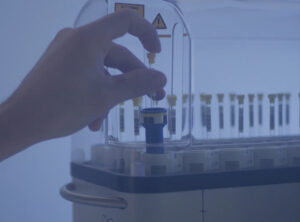Magnetic Resonance spectroscopy is extremely versatile and its study and use has been a key tool for many Nobel prizes.
The MRI (Magnetic Resonance Imaging) used in hospitals is the same basic technology but is not as powerful as the FoodScreener.
Using a magnetic pulse, the machine measures all the hydrogens in the sample. Any liquid can be tested and protocols for honey, juice, wine, coffee and oils exist. Honey is easily examined. Each molecule gives a very specific pattern of peaks that result in a “fingerprint” of every sample. By comparison to a database of known samples we can match the test sample’s fingerprint to “fingerprints” in the database. At the same time we are measuring a bunch of common compounds in the test sample and can see if there are abnormalities that suggest adulteration.
The threat of adulterated honey is so great that we felt that we could not wait for government agencies to catch up. We need solutions right now and the non-targetted method of Magnetic Resonance far outstrips the testing methods that are being used today.
But we need good data. That’s where you come in. We need as many samples as possible to compare with. The more we have the more chances we have to find a match or multiple matches. Even fake or mislabelled samples are useful. If we get bad samples we can examine all the samples in the same area and from the same time and figure out which ones don’t look right and pull them out for further examination. Independent apiary inspectors will also be taking non-biased samples from hives around the world. With a combination of techniques we can make a database that can stop fake honey.

